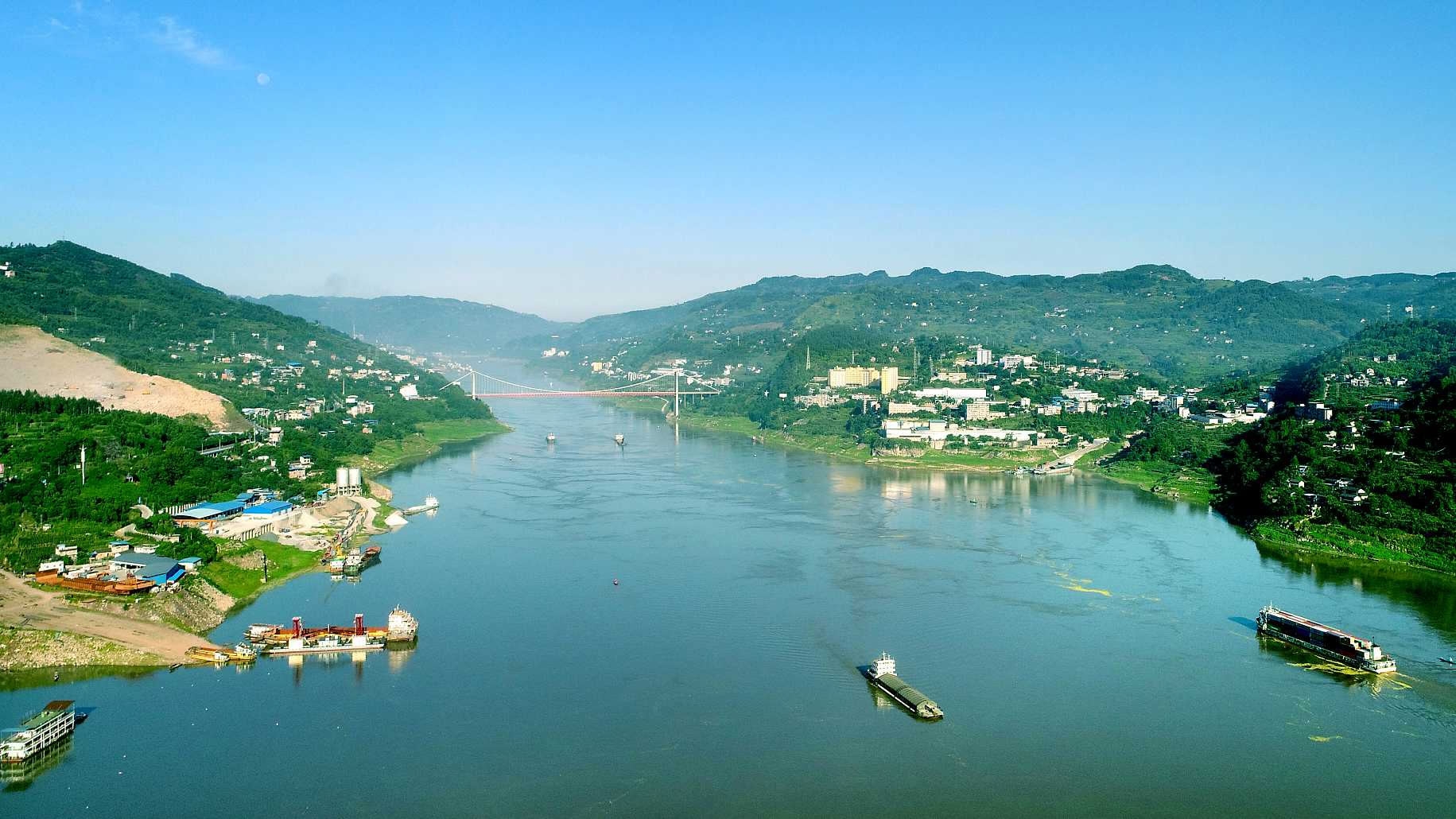More and more companies have been expressing interest in blockchain technology these days. Pilot programs across multiple industries continue to explore blockchain and try to implement it.
So it is also timely for China to design and implement a Pan-Yangtze Watershed Blockchain, with shared vision and goals, strong partnerships, innovation in solutions, clearly set rules and principles, and effective implementation, and funded by public and private capital. Only by doing so can we achieve the vision and targets set by President Xi Jinping, for a
sustainable Yangtze River watershed future.
'Mother River' facing 'ecological death'
The Yangtze River is China’s “Mother River”. Originating from the Tibet-Qinghai Plateau, the river runs through 11 provinces from west inland to east coast until it meets the East China Sea in Shanghai.
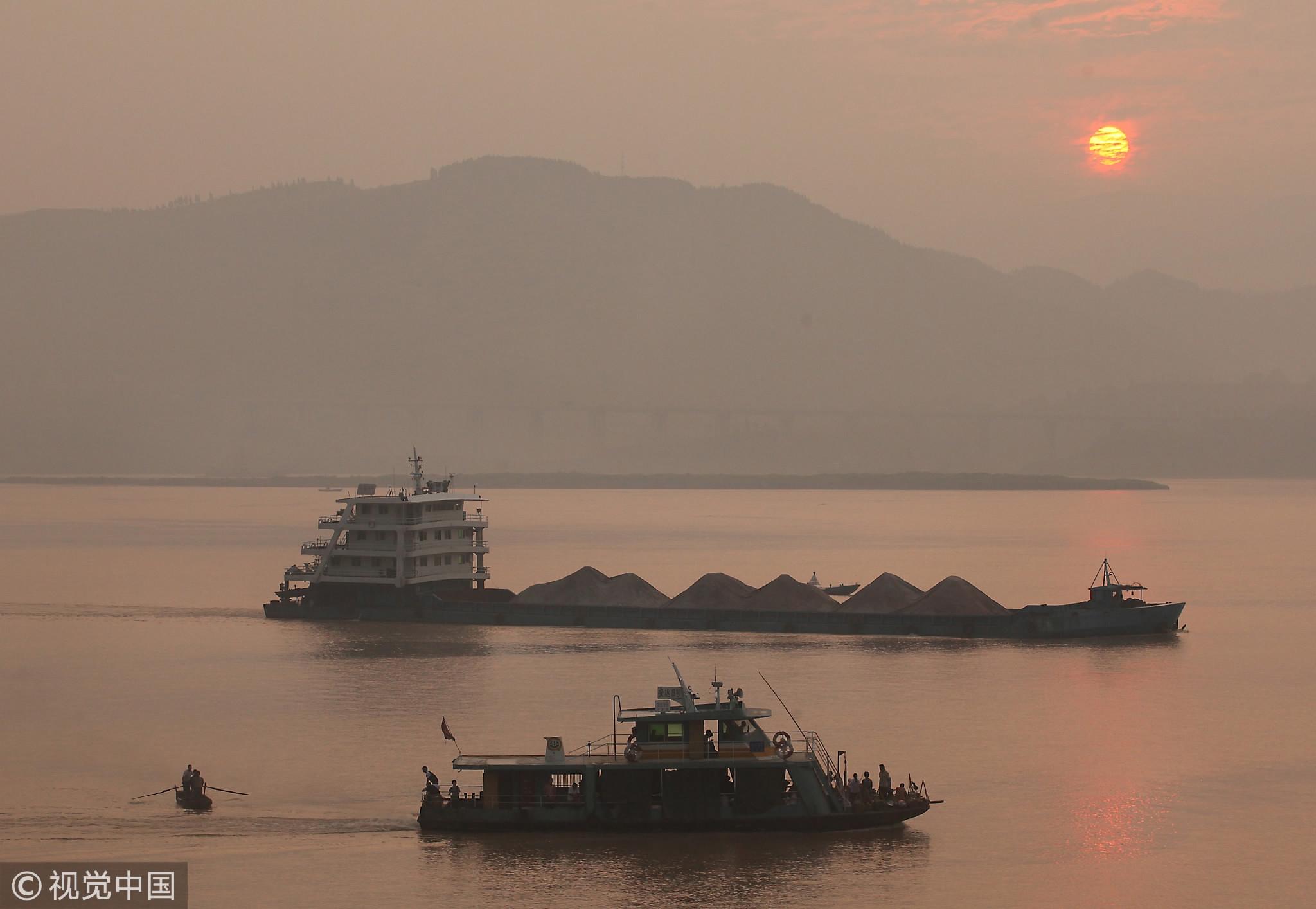
August 30, 2010: River traffic makes its way along a muddy Yangtze River, Sichuan Province. /VCG Photo
August 30, 2010: River traffic makes its way along a muddy Yangtze River, Sichuan Province. /VCG Photo
The country’s “food basket” feeds two-thirds of the country’s population. In the last four decades after China opened up to the world, the river basin at the lower reach of the river has embraced the fastest growth of economy, urbanization and industrialization. It has created an economic miracle and a showcase of how China has risen from a developing region to setting the tone of future growth agenda.
And yet at the same time, we have witnessed how the river is polluted from industrial, agricultural and urban discharges; how wetlands along the river basin are claimed for industrial, urban and energy purposes; how water-related disasters, flood and droughts hit regions along the river; how many people’s health is negatively impacted due to pollution; and how scientists declared it as an “ecologically dead river”.
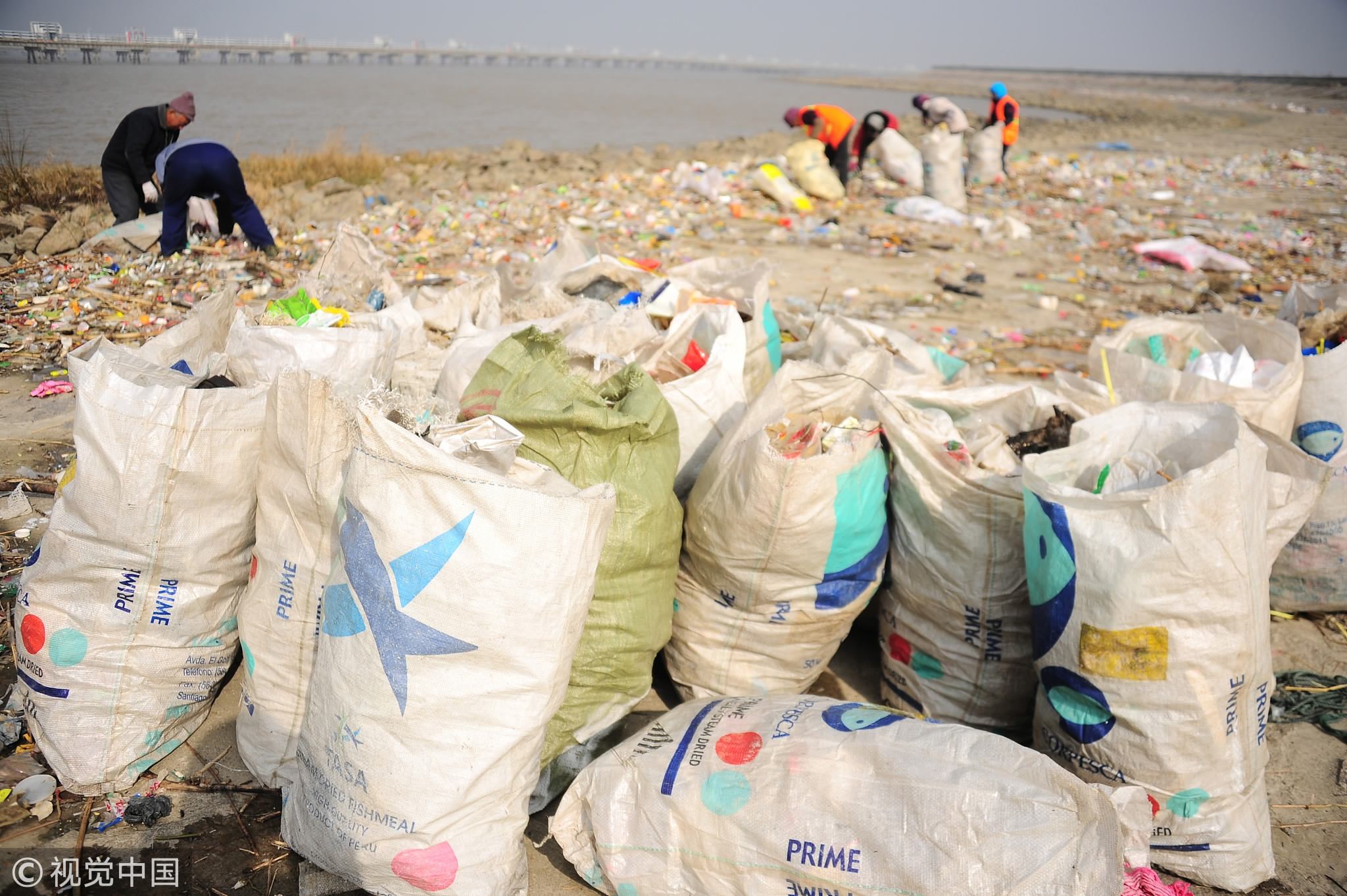
December 23, 2016: People clear wastes along the river band of the Yangtze in Taicang, Jiangsu Province. /VCG Photo
December 23, 2016: People clear wastes along the river band of the Yangtze in Taicang, Jiangsu Province. /VCG Photo
What is encouraging is the awakening of the society and political leaders to such a challenge.
The president’s vision focuses on joint conservation to lay a solid foundation for sustainable development of the provinces along the river basin.
Protecting the watershed becomes a top priority for the country. And water is the foundation of the health of the ecosystems of the watershed, livelihoods of hundreds of millions of people, and one of the most important engines of growth of the region, besides its other values.
The question now is how to deliver such a vision.
'Redlines' in policy-making
Scientific community in China has done a rather comprehensive work in assessing the ecosystems’ health, goods and services they can provide, as well as the ecological boundaries known as “redlines”. This is becoming the scientific foundation for policy targets and incentives.
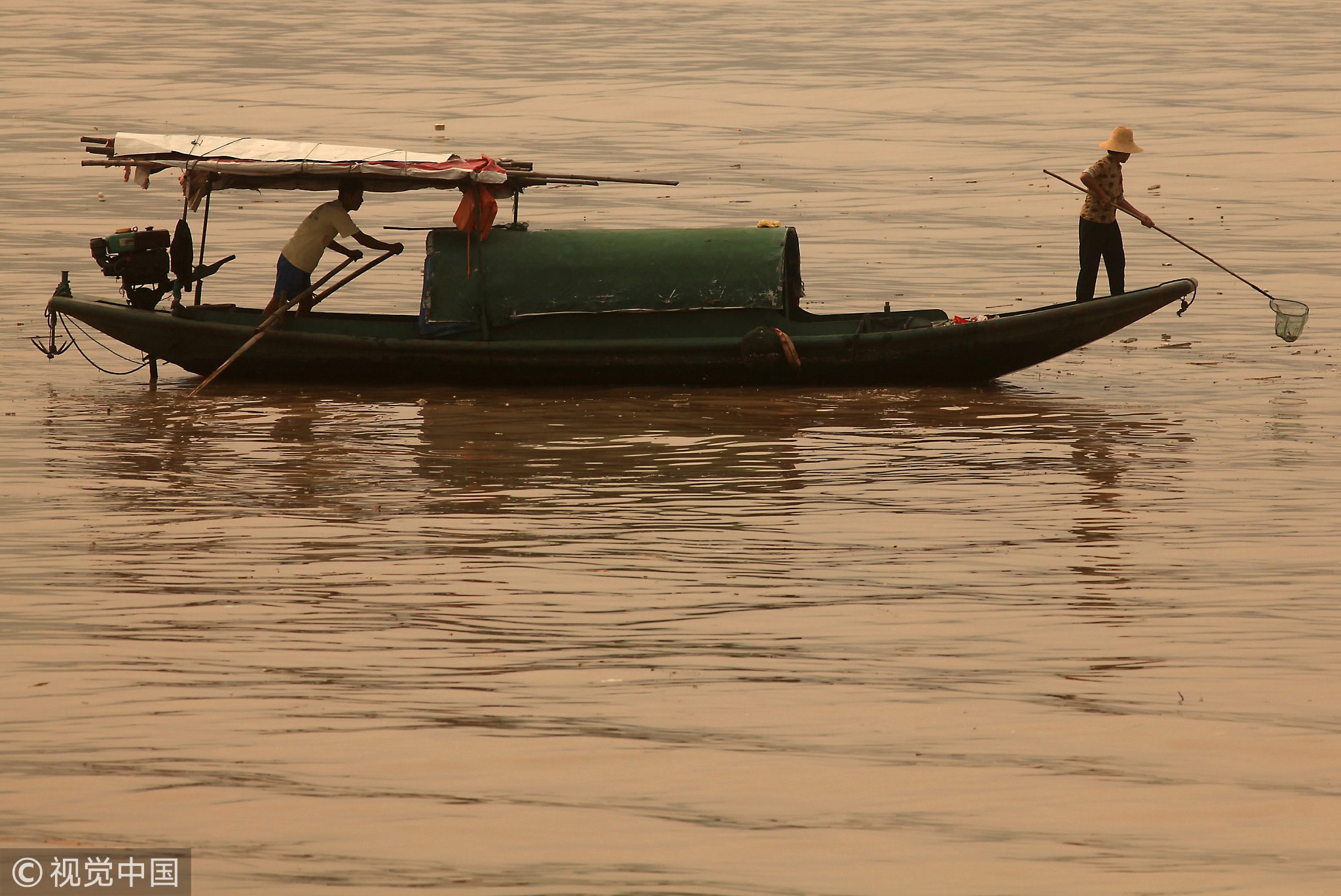
September 2, 2010: Chinese skim floating trash onto their small boat in dense fog on the Yangtze River in Sichuan Province./VCG Photo
September 2, 2010: Chinese skim floating trash onto their small boat in dense fog on the Yangtze River in Sichuan Province./VCG Photo
From the policy perspective, the government has rolled out a few key instruments, including ecological redlines to set the baseline and policy goals to guard the watershed's sustainability; pricing natural capital to set the limits or scarcity that is built upon redlines; and ecosystem compensation to address balance among developed and developing regions when growth priority is determined.
To deliver such a vision, information and knowledge becomes fundamental. Without a full understanding of ecological, economic, social, industrial and even cultural diversity of this vast region, no one can possibly do the job. And the risk, very possibly, is to further endanger the already vulnerable ecological security and create new challenges.
Blockchain - hope for sustainability vision
Blockchain, remote-sensing satellite, learning machine and AI, among others, offer new signs of hope.
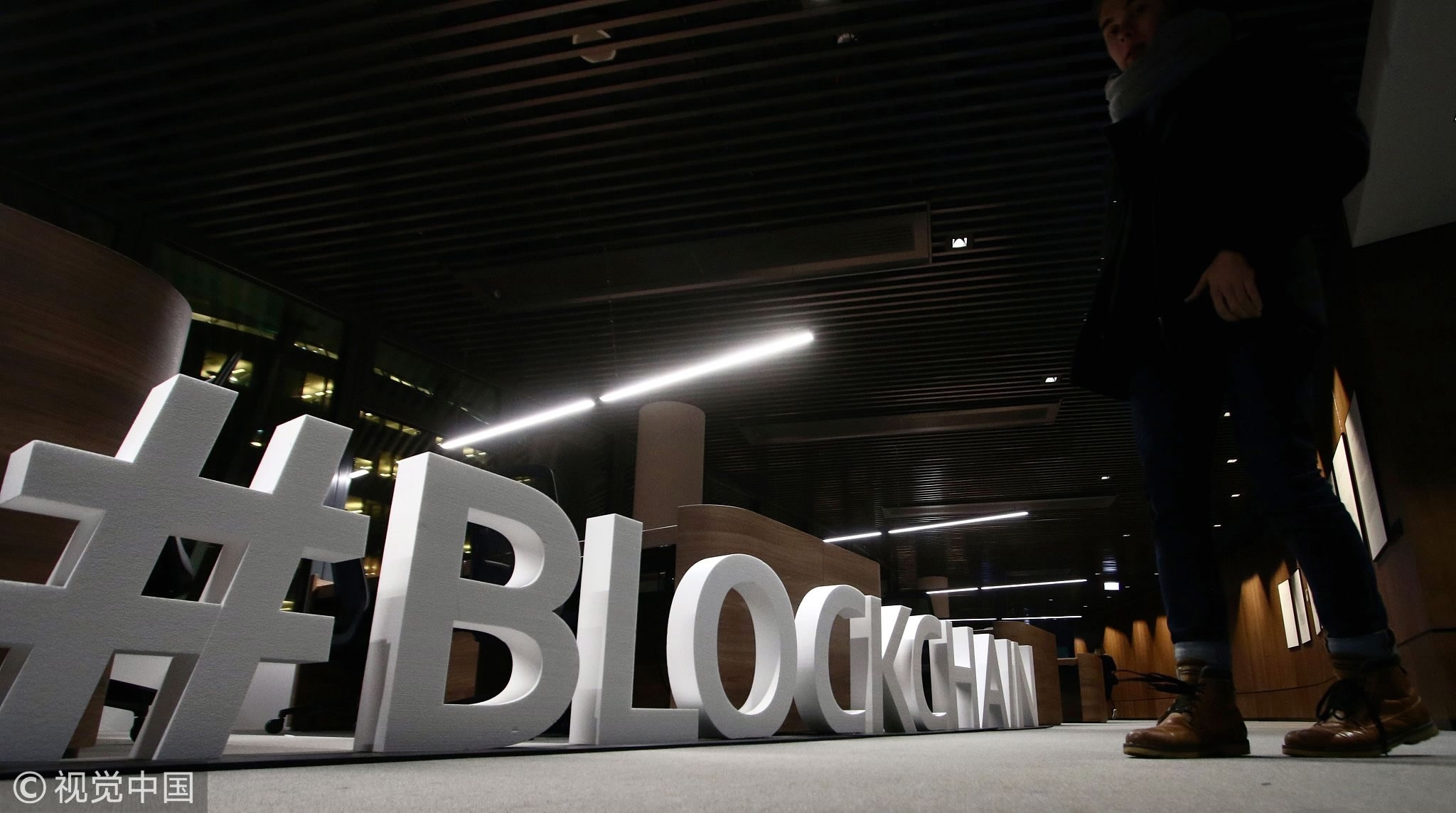
Giant letters, reading the word "blockchain", are displayed at the blockchain center, which aims at boosting start-ups, February 7, 2018, in Lithuania's capital Vilnius./VCG Photo
Giant letters, reading the word "blockchain", are displayed at the blockchain center, which aims at boosting start-ups, February 7, 2018, in Lithuania's capital Vilnius./VCG Photo
The nature of blockchain, such as distributed record, immutability and peer to peer transactions address challenges like trust, transparency, accountability and inclusiveness.
It seems that the required policy-enabling conditions already exist under the pan-Yangtze strategy: The baseline information from drawing the redlines provides the basis for incentive mechanisms, China’s leadership in the internet age sets the foundation of accessibility and broad participation, costs of sensors and other technologies continue to drop and the river and lake mastership mechanism sets the responsibility framework for not only recording but also trading of permits and other items.
I look forward to working with innovators to get such a blockchain-based platform up and running to deliver a sustainability vision for the Pan-Yangtze conservation.
(Wu Changhua is vice chair of the Governing Council of Asia Pacific Water Forum and director of Professional Association for China’s Environment. The article reflects the author’s opinion, not necessarily the views of CGTN.)

